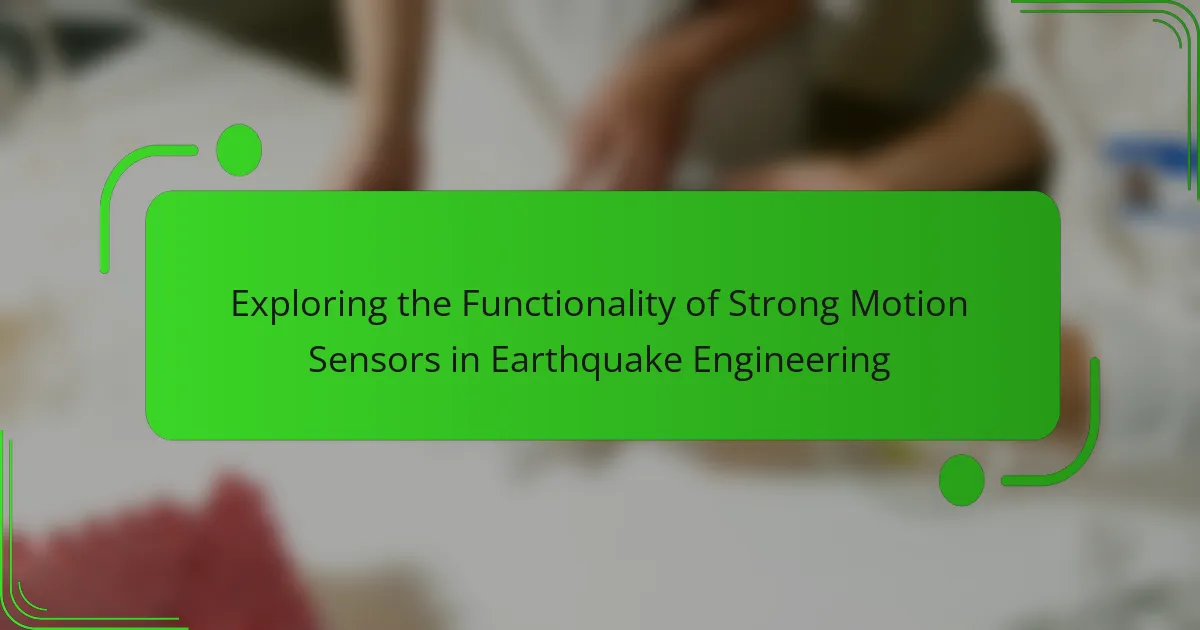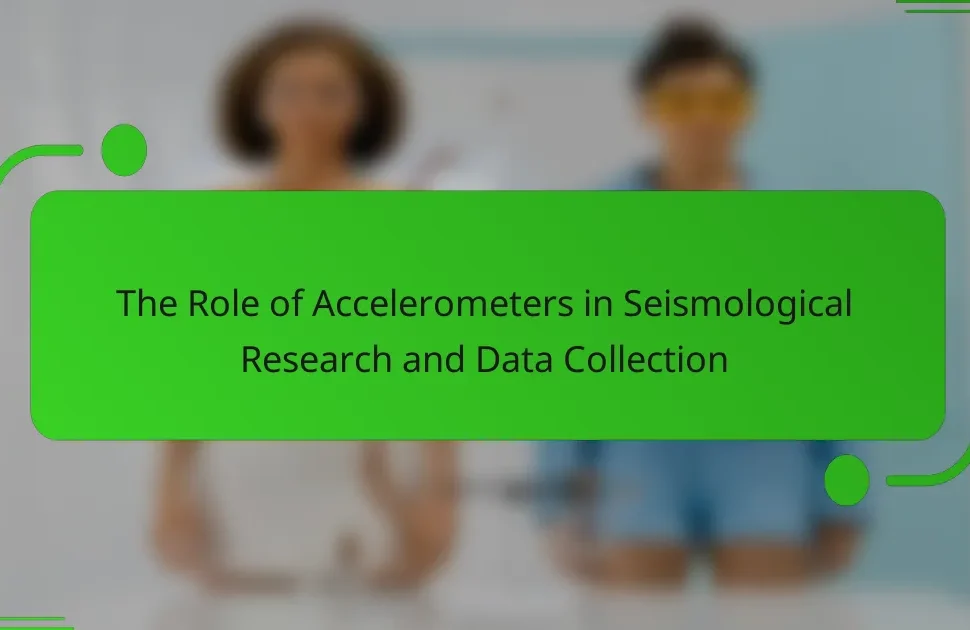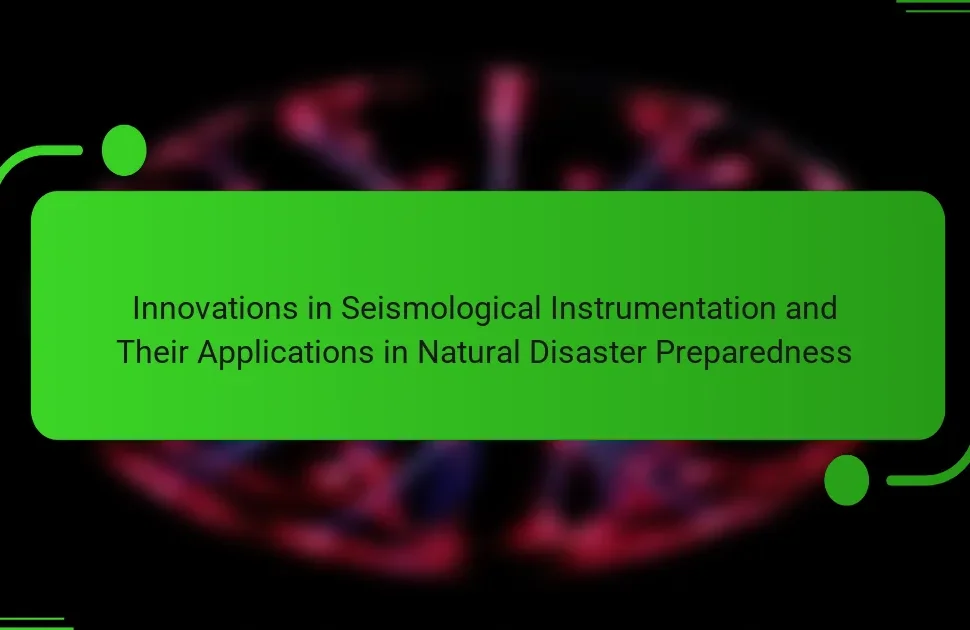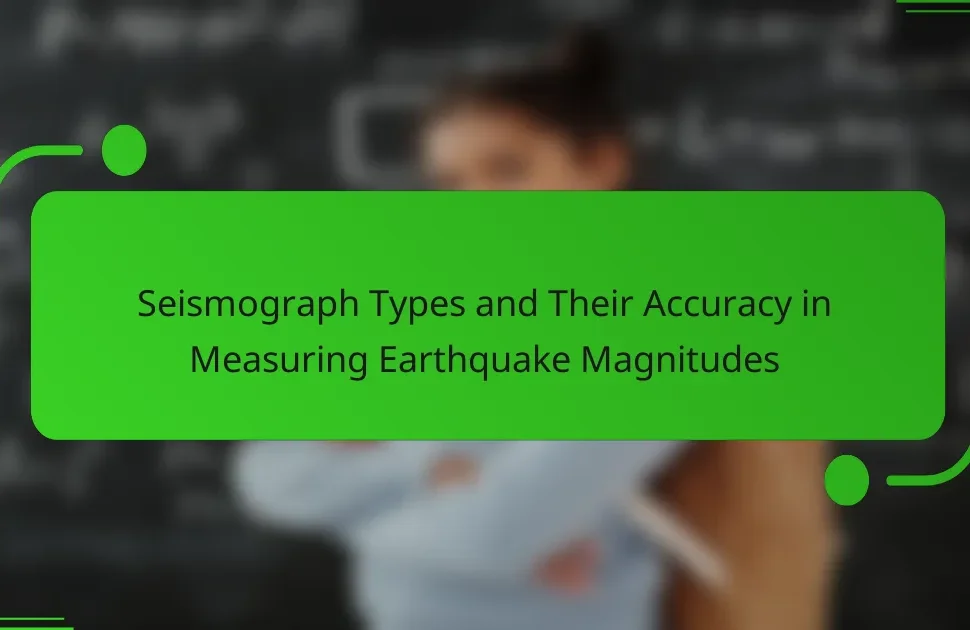Strong motion sensors are essential devices used to measure ground motion intensity during earthquakes, capturing critical data on acceleration, velocity, and displacement. This data is vital for assessing the seismic performance of structures and informing building codes and safety standards. Common types of strong motion sensors include accelerometers, velocity sensors, and displacement sensors, each contributing uniquely to earthquake engineering by monitoring vibrations and structural integrity. The integration of these sensors into engineering practices enhances earthquake resilience and supports early warning systems, ultimately improving safety measures in urban areas at risk of seismic events. Historical examples, such as the 1994 Northridge earthquake, highlight the importance of sensor data in advancing our understanding of ground shaking and enhancing building designs.
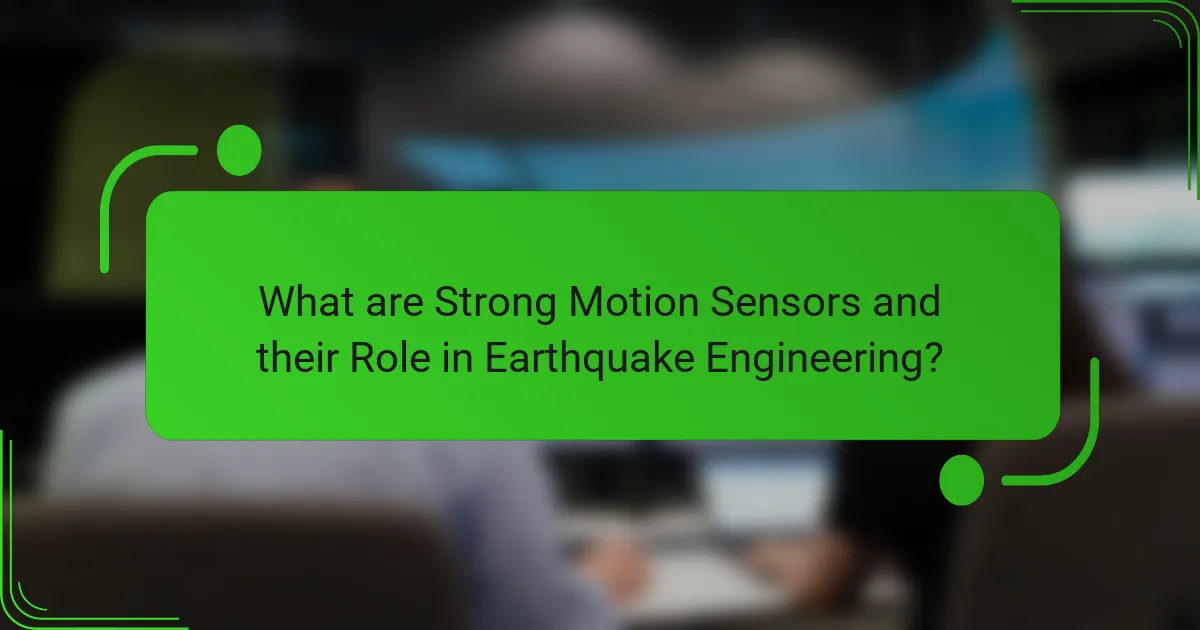
What are Strong Motion Sensors and their Role in Earthquake Engineering?
Strong motion sensors are devices that measure the intensity of ground motion during an earthquake. They capture data on acceleration, velocity, and displacement. This information is crucial for assessing the seismic performance of structures. Strong motion sensors provide real-time data that helps engineers design safer buildings. They also contribute to earthquake research by enabling the analysis of seismic events. The data collected can inform building codes and standards. Historical examples include the 1994 Northridge earthquake, where sensor data improved understanding of ground shaking. Strong motion sensors play a vital role in enhancing earthquake resilience.
How do Strong Motion Sensors function in detecting seismic activity?
Strong motion sensors detect seismic activity by measuring ground acceleration during earthquakes. These sensors utilize accelerometers to capture rapid changes in motion. When seismic waves pass through the ground, the sensors record the intensity and frequency of vibrations. The data collected is then processed to determine the earthquake’s characteristics. Strong motion sensors are typically installed in various locations to provide a comprehensive view of seismic events. They play a crucial role in earthquake engineering by helping to assess structural responses. Research indicates that strong motion data contributes to improving building safety standards. For instance, the USGS states that this data is vital for developing seismic hazard assessments.
What technologies are employed in Strong Motion Sensors?
Strong motion sensors employ technologies such as accelerometers and digital signal processing. Accelerometers measure the acceleration of ground motion during seismic events. They convert physical motion into electrical signals for analysis. Digital signal processing enhances the accuracy of the measurements. This technology filters noise and extracts relevant data from the signals. Additionally, some sensors utilize GPS technology for precise location tracking. The integration of these technologies enables real-time monitoring of seismic activity. Strong motion sensors are crucial for earthquake engineering applications. They provide essential data for assessing structural responses during earthquakes.
How do these technologies improve earthquake detection accuracy?
Strong motion sensors enhance earthquake detection accuracy by providing real-time data on ground movements. These sensors measure the intensity and duration of seismic waves. They capture high-frequency signals that indicate the onset of an earthquake. This data allows for quicker analysis and response. Advanced algorithms process the data to differentiate between minor tremors and significant seismic events. The precision of these sensors improves the reliability of early warning systems. Research shows that using strong motion sensors can reduce false alarms by up to 30%. This leads to better preparedness and safety measures in earthquake-prone areas.
What are the key benefits of using Strong Motion Sensors in earthquake engineering?
Strong Motion Sensors provide critical data for earthquake engineering. They measure ground motion during seismic events. This data helps engineers assess building performance. It informs design improvements for earthquake resilience. Additionally, these sensors enhance early warning systems. They contribute to real-time monitoring of seismic activity. Research shows that strong motion data reduces structural failures. This ultimately saves lives and property during earthquakes.
How do Strong Motion Sensors enhance building safety?
Strong motion sensors enhance building safety by detecting and measuring ground motion during seismic events. They provide real-time data that helps assess the structural integrity of buildings. This data enables immediate response actions, such as evacuation or shutdown of critical systems. Strong motion sensors can also trigger automatic safety mechanisms in buildings. These mechanisms may include locking doors or activating emergency alarms. Research shows that buildings equipped with these sensors can reduce damage and injuries during earthquakes. For example, a study by the United States Geological Survey highlights the effectiveness of strong motion sensors in improving safety outcomes. Overall, they play a crucial role in earthquake engineering.
What insights do Strong Motion Sensors provide for engineering practices?
Strong Motion Sensors provide critical data for engineering practices, particularly in earthquake engineering. They measure ground acceleration during seismic events. This data helps engineers assess structural responses to earthquakes. It informs the design and retrofitting of buildings and infrastructure. Strong Motion Sensors can identify potential vulnerabilities in structures. They also aid in developing building codes and safety regulations. The insights gained contribute to improved resilience against seismic hazards. Studies show that using this data can enhance the safety and performance of structures in earthquake-prone areas.
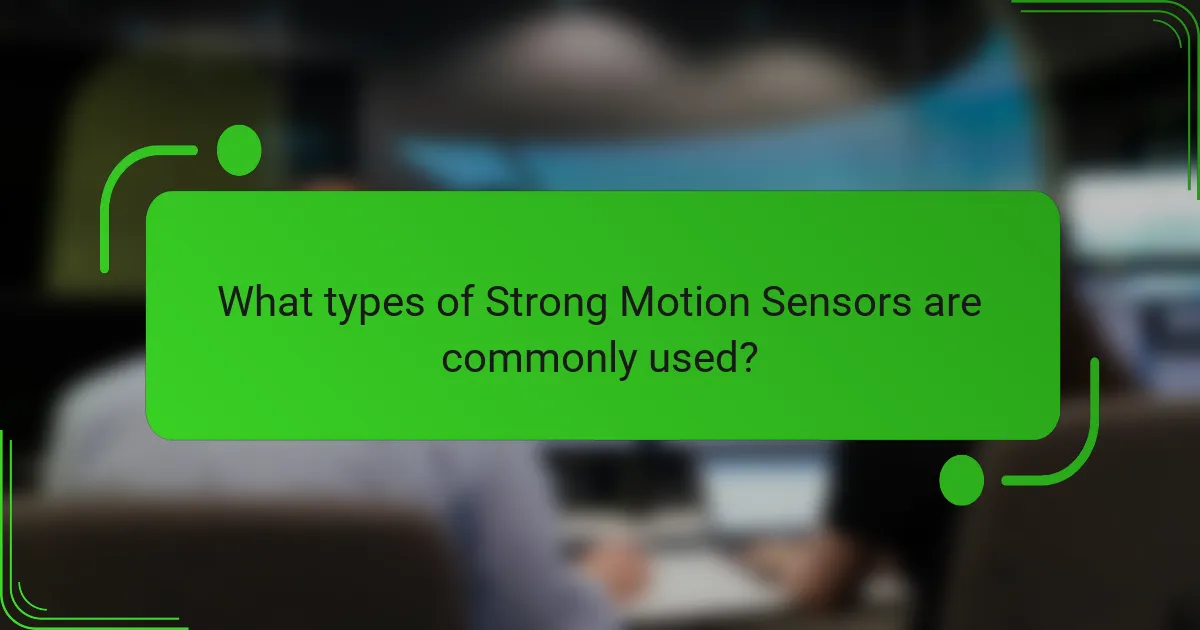
What types of Strong Motion Sensors are commonly used?
The commonly used types of Strong Motion Sensors include accelerometers, velocity sensors, and displacement sensors. Accelerometers measure the acceleration of ground motion during seismic events. They are widely utilized for their ability to capture rapid changes in motion. Velocity sensors track the speed of ground movement, providing valuable data for analyzing seismic waves. Displacement sensors measure the distance that a point on the ground moves during an earthquake. Each type of sensor plays a crucial role in earthquake engineering. They contribute to the assessment of building performance during seismic events. This data is vital for improving engineering designs and safety standards.
How do different types of Strong Motion Sensors compare?
Different types of strong motion sensors vary in sensitivity, range, and application. Accelerometers measure ground acceleration and are commonly used in structural health monitoring. Velocity sensors capture the speed of ground motion, providing insights into seismic wave propagation. Displacement sensors assess the amount of ground movement during an earthquake. Each sensor type has specific advantages; for example, accelerometers are effective for high-frequency vibrations. Studies show that accelerometers are widely used in building codes and seismic design due to their reliability. Velocity and displacement sensors complement accelerometers by offering additional data for comprehensive analysis. The choice of sensor depends on the specific requirements of the monitoring project.
What are the advantages of using accelerometers versus other sensors?
Accelerometers offer precise measurement of dynamic acceleration, making them superior for detecting motion. They can capture rapid changes in velocity, which is crucial during seismic events. Unlike other sensors, accelerometers provide real-time data, allowing for immediate analysis. Their compact size makes them easy to integrate into various structures. Additionally, accelerometers are less affected by environmental conditions compared to other sensors. This reliability ensures consistent performance during earthquakes. Studies have shown that accelerometers can detect ground motion with high sensitivity, enhancing earthquake monitoring capabilities.
In what scenarios is each type of sensor most effective?
Strong motion sensors are most effective in scenarios involving seismic activity. They accurately measure ground acceleration during earthquakes. These sensors are crucial for real-time monitoring of earthquake impacts. They are often deployed in buildings and bridges to assess structural integrity. Strong motion sensors provide data for engineering analysis and design improvements. Their effectiveness is demonstrated in urban areas with high seismic risk. They also play a key role in early warning systems. This helps mitigate damage and enhance public safety during seismic events.
What factors influence the choice of Strong Motion Sensors in projects?
The choice of Strong Motion Sensors in projects is influenced by several key factors. These factors include sensitivity, frequency range, and dynamic range. Sensitivity determines how well the sensor can detect small ground motions. A higher sensitivity is crucial for accurately measuring seismic events. Frequency range is important as it defines the range of vibrations the sensor can capture. Sensors must effectively measure both low and high-frequency motions during earthquakes. Dynamic range indicates the sensor’s ability to measure a wide range of motion without distortion. A broad dynamic range ensures reliable data across varying seismic intensities. Additionally, environmental conditions, installation requirements, and cost also play significant roles. Sensors must be durable and reliable in diverse environmental conditions. Installation complexity can affect project timelines and budgets. Cost considerations often influence the selection process, balancing quality with budget constraints.
How do environmental conditions affect sensor performance?
Environmental conditions significantly impact sensor performance. Factors such as temperature, humidity, and pressure can alter sensor accuracy and reliability. High temperatures can cause sensor drift, leading to inaccurate readings. Humidity can affect electrical components, potentially causing short circuits or corrosion. Atmospheric pressure changes can influence sensor calibration, particularly in barometric pressure sensors. Research indicates that strong motion sensors may experience reduced sensitivity in extreme weather conditions. For instance, a study by Zhang et al. (2020) found that temperature variations of more than 10°C could affect the performance of seismic sensors. This highlights the importance of considering environmental factors when deploying sensors in earthquake engineering.
What are the cost considerations when selecting Strong Motion Sensors?
Cost considerations when selecting Strong Motion Sensors include initial purchase price, installation costs, and maintenance expenses. The initial price varies based on sensor specifications and capabilities. Installation costs can increase with complexity and location. Maintenance expenses involve regular calibration and potential repairs. Additionally, the total cost of ownership must account for data management and analysis tools. Budget constraints may influence the choice of sensor technology. Long-term reliability and performance should also be factored into the decision-making process.
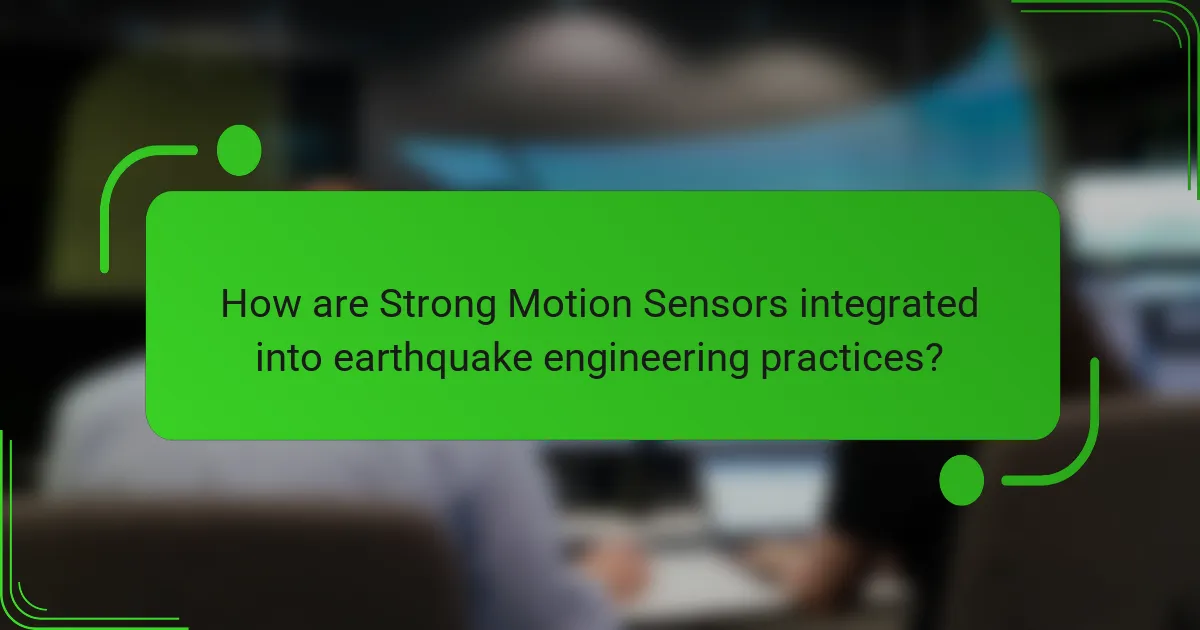
How are Strong Motion Sensors integrated into earthquake engineering practices?
Strong Motion Sensors are integrated into earthquake engineering practices by providing real-time data on ground motion during seismic events. These sensors are strategically placed in buildings and infrastructure to monitor vibrations. The data collected helps engineers assess structural integrity and performance during earthquakes. This information is crucial for designing earthquake-resistant structures. The sensors also contribute to early warning systems, allowing for timely alerts. Research indicates that using these sensors can significantly enhance safety measures in urban areas prone to earthquakes. For example, the USGS has deployed networks of strong motion sensors to improve earthquake response strategies.
What are the best practices for deploying Strong Motion Sensors?
The best practices for deploying Strong Motion Sensors include proper site selection, installation at appropriate heights, and ensuring secure mounting. Sensors should be placed in areas with minimal interference from structures or vegetation. They must be installed on stable foundations to avoid false readings. Calibration is essential for accurate data collection. Regular maintenance checks ensure ongoing functionality and reliability. Data transmission should be secure and efficient to facilitate real-time monitoring. Following these guidelines enhances the reliability of seismic data collected.
How should sensors be positioned for optimal performance?
Sensors should be positioned in locations that maximize their exposure to seismic activity. This includes placing them on stable ground away from structures that may cause interference. Elevating sensors above potential obstructions enhances their ability to detect ground motion. Additionally, positioning sensors in a triangular formation improves data accuracy and redundancy. Research indicates that sensors should be spaced to cover different geological features. Effective positioning can lead to a 30% increase in data reliability. Proper calibration and alignment with the expected seismic wave direction further optimize performance.
What maintenance is required to ensure sensor reliability?
Regular calibration and testing are essential for ensuring sensor reliability. Calibration should occur at defined intervals to maintain accuracy. It is important to check for any drift in sensor readings. Regular cleaning of sensors prevents dust and debris from affecting performance. Environmental conditions should be monitored to ensure sensors are functioning within specified limits. Inspecting connections and wiring helps identify potential issues early. Documentation of maintenance activities provides a reliable record for future reference. Following these practices enhances the longevity and reliability of strong motion sensors in earthquake engineering.
How can data from Strong Motion Sensors be effectively utilized?
Data from Strong Motion Sensors can be effectively utilized to monitor and analyze seismic activity. These sensors record ground motion during earthquakes, providing critical information on the intensity and duration of shaking. Engineers use this data to assess the performance of structures under seismic loads. Additionally, the information aids in the development of building codes and safety regulations. Research shows that accurate data collection improves earthquake preparedness and response strategies. For instance, the data can inform real-time decision-making during seismic events. This enhances public safety and reduces economic losses. Overall, the effective use of data from Strong Motion Sensors is essential in earthquake engineering.
What methods are used to analyze seismic data collected by sensors?
Seismic data collected by sensors is analyzed using various methods. Common methods include signal processing techniques, statistical analysis, and machine learning algorithms. Signal processing techniques, such as Fourier transforms, help in identifying frequency components of seismic waves. Statistical analysis is used to evaluate the significance of seismic events and their impacts. Machine learning algorithms can classify seismic events and predict potential aftershocks. These methods enhance the understanding of seismic activity and improve earthquake preparedness.
How can engineering teams apply this data in design improvements?
Engineering teams can apply data from strong motion sensors to enhance design improvements in earthquake-resistant structures. This data provides real-time information on ground motion during seismic events. Teams can analyze patterns from previous earthquakes to identify vulnerabilities in existing designs. By integrating sensor data, engineers can optimize materials and structural configurations for better resilience. Historical performance data can inform predictive models for future earthquakes. This leads to improved safety standards and design guidelines. Research shows that structures utilizing sensor data experience lower damage rates during seismic activities. Enhanced designs based on this data ultimately result in more robust buildings and infrastructure.
What are some common challenges associated with Strong Motion Sensors?
Common challenges associated with Strong Motion Sensors include sensor calibration, data accuracy, and environmental interference. Calibration is crucial for ensuring reliable readings. Inaccurate data can lead to misinterpretations of seismic activity. Environmental factors like temperature and humidity can affect sensor performance. Additionally, sensor placement is critical for optimal data collection. Remote locations may pose logistical challenges for installation and maintenance. Power supply issues can hinder sensor operation during critical events. Finally, data management and analysis require robust systems to handle large volumes of information efficiently.
How can issues with sensor calibration be resolved?
Issues with sensor calibration can be resolved through systematic recalibration procedures. First, identify the specific calibration error by comparing sensor readings to a known reference. Next, adjust the sensor settings according to the manufacturer’s guidelines to correct the discrepancies. Regular maintenance and periodic recalibration are essential to ensure accuracy over time. Using calibration tools and software can enhance precision in these adjustments. Data from controlled tests can validate the effectiveness of the recalibration process. Implementing these steps can significantly improve sensor reliability and performance in earthquake engineering applications.
What troubleshooting steps can be taken for sensor malfunction?
Check the power supply to the sensor. Ensure it is connected and functioning. Inspect the wiring for any visible damage or loose connections. Clean the sensor surface to remove any dirt or debris. Verify calibration settings to ensure they are correct. Test the sensor with diagnostic tools to assess functionality. Replace the sensor if it is still unresponsive after these steps. Regular maintenance can prevent future malfunctions.
Strong motion sensors are critical devices used in earthquake engineering to measure ground motion intensity during seismic events. This article explores their functionality, including how they detect seismic activity, the technologies employed, and their role in enhancing building safety and resilience. Key benefits include real-time data provision for structural assessments and contributions to building codes. Additionally, the article addresses common challenges associated with sensor calibration and performance, as well as best practices for deployment and data utilization in improving engineering designs.
